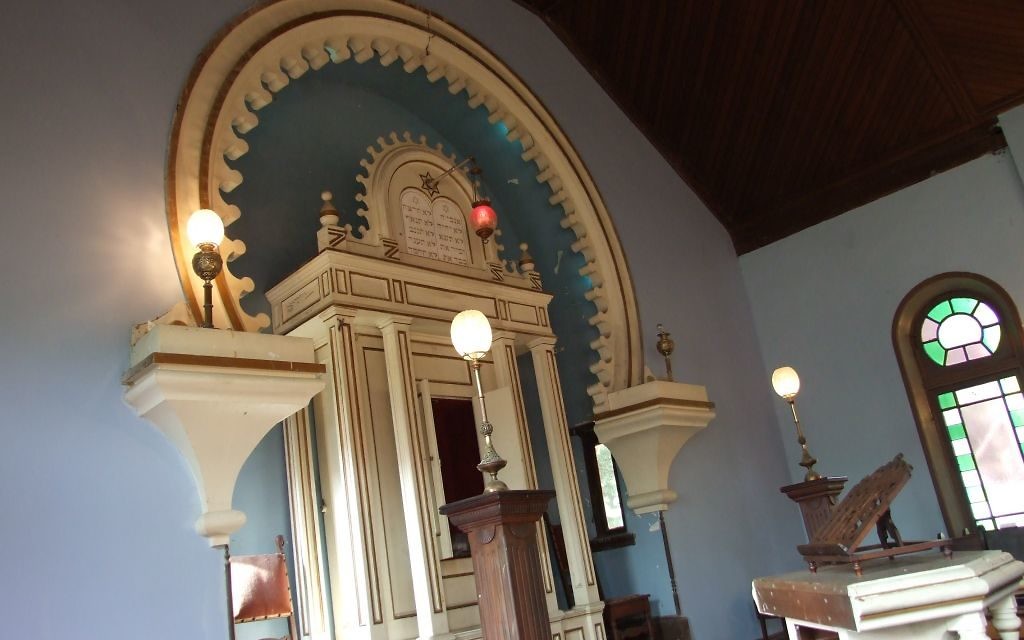Making Jewish History in New Orleans
The new Museum of the Southern Jewish Experience will take up half of a four-floor, newly renovated building.

“How many of you were born in the South?” the speaker asked from the bimah of the chapel at Temple Sinai in New Orleans during Friday night services July 28.
Most of the people in the overflow crowd — almost an oxymoron at a Reform synagogue in the middle of summer, even with three congregations gathering together — raised their hands.
By the time Ken Hoffman got through questions about our parents, grandparents and great-grandparents to ask how many had family in the South before the Civil War, about a half-dozen of us still held our hands up.
Get The AJT Newsletter by email and never miss our top stories Free Sign Up
“You’re the people I want to talk to,” Hoffman said.
That’s because Hoffman, who was born in Houston, was raised in Baton Rouge, earned two history degrees from Tulane and spent the past 18½ years as the education director at the National World War II Museum in New Orleans, had just been announced as the director of the reborn Museum of the Southern Jewish Experience.
The museum got its start in 1986 at the Reform movement’s Henry S. Jacobs Camp (named for my grandfather’s brother) in Utica, Miss., after some of the small Jewish communities disappearing around the South began donating relics to the camp.
Under Macy Hart, the museum evolved into the Goldring/Woldenberg Institute of Southern Jewish Life, which moved to Jackson and shut down the museum itself.
But now the institute has spun off the museum into an independent nonprofit organization that has Atlantan Jay Tanenbaum as its chairman and possesses more than 2,000 items, including some 700 oral histories. The museum has found a home in New Orleans: 818 Howard Ave., about two blocks from the city’s No. 1 tourist attraction, the World War II Museum, and one block from Lee-less Circle.
The new Museum of the Southern Jewish Experience will take up half of a huge, four-floor, newly renovated building owned by Jewish commercial real estate developer Jeffrey Feil. It will be designed by the firm of Patrick Gallagher, the Jewish creator behind the World War II Museum and the overhauled Beit Hatfutsot in Tel Aviv.
Given the involvement of Hoffman and Gallagher, and based on the presentation July 28 by museum Vice Chairman Rusty Palmer (a Selma, Ala., native and New Orleans resident), the museum should provide the same kind of interactive experience you get at the World War II Museum, albeit with less military hardware.
It should be an impressive, exciting addition to the cluster of museums near the circle (and right on the St. Charles streetcar line) when it opens in 2019. And all of us have a role to play in making the museum what we want it to be as it tells the Southern Jewish story.
Believe it or not, neither Hoffman nor Palmer made a pitch for donations, but they did push hard for a different kind of contribution: a 15-question online survey, accessible at www.surveymonkey.com/r/msje or through the museum’s website, www.msje.org. While you’re there, you can sign up for email updates on the museum.
The new museum, well-stocked with items and stories from the small-town Jewish South, should serve as a nice complement to the Breman Museum, which leans toward the big-city Jewish South with its Atlanta and Savannah collections.
Hoffman’s involvement piques my interest not only because he’s a fellow Tulane history grad, but also because he did his master’s thesis on the Jewish community of Port Gibson, Miss., where my grandmother went to synagogue before her family moved from nearby Pattison to New Orleans.
That’s the same grandmother whose 104th birthday we celebrated the day the museum announced its location and Hoffman’s hiring.
A museum to help tell her family story is not a bad present. Happy birthday, GaGa.




comments